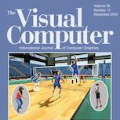Temporal graphs naturally model graphs whose underlying topology changes over time. Recently, the problems TEMPORAL VERTEX COVER (or TVC) and SLIDING-WINDOW TEMPORAL VERTEX COVER(or $\Delta$-TVC for time-windows of a fixed-length $\Delta$) have been established as natural extensions of the classic problem VERTEX COVER on static graphs with connections to areas such as surveillance in sensor networks. In this paper we initiate a systematic study of the complexity of TVC and $\Delta$-TVC on sparse graphs. Our main result shows that for every $\Delta\geq 2$, $\Delta$-TVC is NP-hard even when the underlying topology is described by a path or a cycle. This resolves an open problem from literature and shows a surprising contrast between $\Delta$-TVC and TVC for which we provide a polynomial-time algorithm in the same setting. To circumvent this hardness, we present a number of exact and approximation algorithms for temporal graphs whose underlying topologies are given by a path, that have bounded vertex degree in every time step, or that admit a small-sized temporal vertex cover.
翻译:自然的温度图形 自然的模型图 其基本表层随着时间的推移的变化。 最近, TEMPORAL VERTEX CEV( 或 TVC) 和 SLIDING- WINDOW TTEMPORAL TEMPORAL VERTEX COV( 或$Delta$- TVC) 的问题被确定为固定长度 $\ Delta$ 的时窗的自然模型图的自然延伸。 VERTEEX CEVE 与传感器网络监视等领域的连接的静态图形VERTEEX CVEVE 的自然延伸。 在本文中, 我们开始系统研究TVC 和 $\ Delta$- TVC 的复杂程度。 我们的主要结果显示, 每一个$\ Delta\ geq 2$, $\ geq, $\ Delta$\ TVC $\ TVC 和 SLVC 的复杂程度。 这解决了文学的开放问题, 并展示了在同一环境中提供多时段算算算算算算算算算法。 为了规避, 我们展示了多少一个固定的时程缩缩缩缩图, 。




